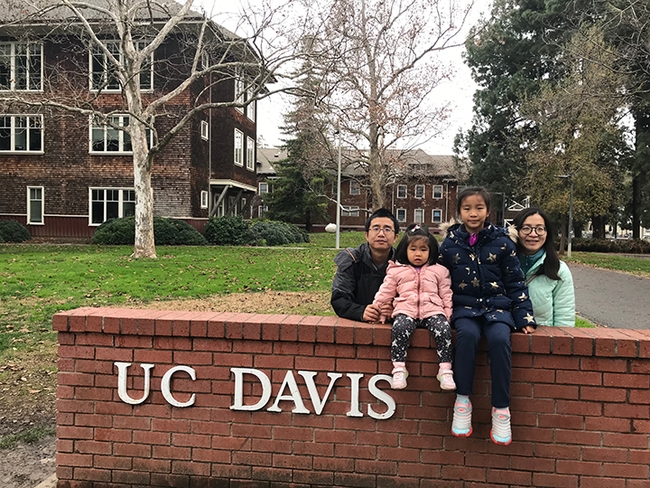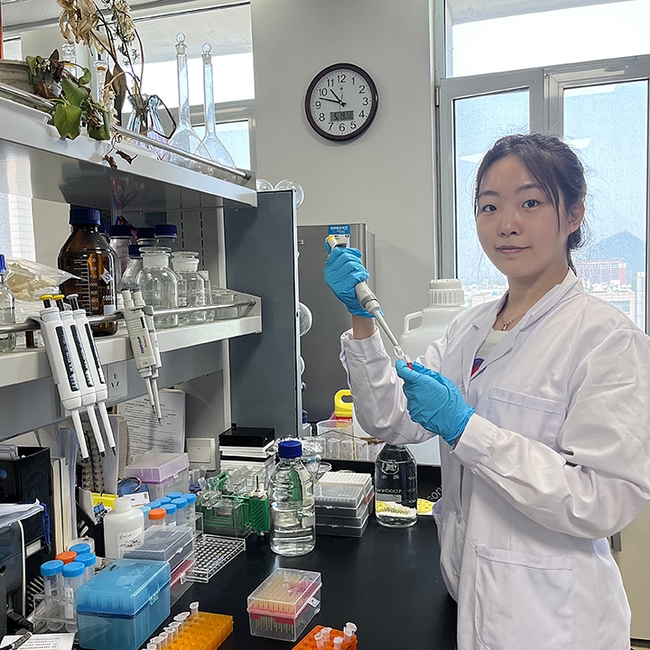
The research involves the development of a DNA-based sensor amplification system demonstrated in a fluorescence immunoassay that can detect, both simply and rapidly, trace amounts of organophosphate pesticides (OPs) in food products.
Trace detection of such OPs as triazophos, parathion, and chlorpyrifos is “extremely important for various reasons, including food safety, environmental monitoring, and national health,” the authors pointed out.
The device is not only easier to use, more reliable, and faster than traditional methods of pesticide detection, but offers a more cost-effective alternative, said the authors, noting that their device could “address the limitations of traditional detection methods, such as liquid chromatography-tandem mass spectrometry, which are expensive, time-consuming, and require extensive training.”
The paper, “Competitive Fluorescent Immunosensor Based on Catalytic Hairpin Self-Assembly for Multiresidue Detection of Organophosphate Pesticides in Agricultural Products,” appeared in the February edition of the Food Chemistry journal and is republished in June as “Paper of the Month."
Maojun Jin, who served a year (September 2019 to September 2020) as a visiting scholar in the Hammock laboratory, UC Davis Department of Entomology and Nematology, led the research team, and is the senior author and corresponding author. He is now a professor in the Institute of Quality Standards and Testing Technology for Agro-Products, Chinese Academy of Agricultural Sciences. His doctoral student, Yuanshang Wang, is the first author.
“The immediate impact of the rapid biobar code immunoassay in reducing human and environmental exposure to three organophosphate pesticides is obvious,” said Hammock, who holds a joint appointment with the Department of Entomology and Nematology and the UC Davis Comprehensive Cancer Center. “Since Rosalyn Yalow shared the 1977 Nobel Prize for developing the immunoassay, there have been many incremental improvements to increase assay sensitivity and speed. The biobar code amplification system is more than incremental. It also allows samples to be multiplexed with several analytes monitored in one tube. This amplification technology can be applied to immunoassays in general in both the biomedical and environmental field. It is wonderful to see what Maojun and his team have accomplished. In analytical chemistry we are always striving for ‘better, faster, cheaper' and Maojun's team accomplished this.”
Hammock said that the aim is to “ensure proper use and protect human health from some commonly used and quite toxic pesticide and the development of a novel signal amplification - transduction system making the assay faster, more sensitive and allowing the assay to be multiplexed with the possibility of multiple signals in one tube with the use of DNA biobar codes.” In the paper, the co-authors point out that “The organophosphate pesticides triazophos, parathion, and chlorpyrifos are highly toxic and have been linked to adverse health outcomes, such as cancer. Although many countries have banned or restricted their use, the chemicals are still components of pesticide mixtures used in daily agricultural production around the world. The sensor contains an immunoassay, which is a type of test that uses antibodies to detect pesticide residues. This process results in a single DNA strand that then binds to a gold nanomaterial-based synthetic protein through chemical bonding.”
“Then, another DNA structure called a hairpin is added to the mix to from a double-stranded DNA structure,” they explained. “The resulting structure fluoresces upon detection of the residues so organophosphates can be quantified.”
The team then used the sensor to measure traces of OPs in contaminated fruit, vegetables, and grain and compared their results to findings from traditional liquid chromatography-tandem mass spectrometry. They found that their DNA-based sensor detected the three pesticides in the mixtures as accurately as the mass spectrometry method.
“I'm very proud of what Maoiun and his team have accomplished,” said Hammock, who directs the NIEHS-UC Davis Superfund Research Program. The research was partially funded by his Superfund grant, and his NIEHS RIVER (Revolutionizing Innovative, Visionary Environmental Health Research) Award.
In addition, the research drew financial support from the National Natural Science Foundation of China, Central Public-interest Scientific Institution Basal Research Fund, and the Central Public Interest Scientific Institution Basal Research Fund for the Chinese Academy of Agricultural Sciences.
Professor Jin is engaged in research on food safety testing technology, especially in immunoassay. “Firstly, we develop antibodies against different types of pesticides, including monoclonal antibodies, nanobodies, and recombinant antibodies,” he explained. “With these antibodies, we can specifically recognize pesticide residues in food and the environment. On the basis of preparing antibodies, we achieve quantitative detection of pesticide residues based on different labeling systems, such as colloidal gold, fluorescence, chemiluminescence, and DNA strands. This paper is based on DNA strands as marker substances, achieving the detection of very trace pesticides in food and ensuring human health.”
Yuanshang Wang is a doctoral student at Huazhong Agricultural University, specializing in food science. “My research interest is in the field of trace and rapid detection analysis of hazardous substances in food,” she said.
Attached Images:

Maojun Jin, shown here with his family, served a year (September 2019 to September 2020) as a visiting scholar in the Bruce Hammock laboratory, UC Davis Department of Entomology and Nematology. He is now a professor in the Institute of Quality Standards and Testing Technology for Agro-Products, Chinese Academy of Agricultural Sciences.

Doctoral student Yuanshang Wang of the Chinese Academy of Agricultural Sciences is the first author of the paper involving how DNA-based sensor rapidly detects pesticide contamination.